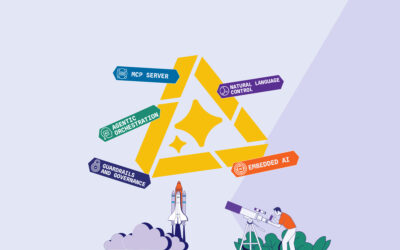From optimizing productivity, digitizing distribution, and building a resilient enterprise, today’s insurers are facing several challenges. To accomplish these goals and scale with ease, insurance carriers must make digital transformations and adopt a resilient mindset. EIS’ solutions consulting team helps them achieve this.
We spoke with Richard Fisher, VP of global solutions consulting at EIS, to discuss how the EIS solutions consulting team brings insurance products to life for each unique partner and customer, as well as the team’s progress to date and its role in EIS’, and our customers’, continuing success.
What issues do insurers need to address over the next 12 to 24 months?
I’m more focused on what the insurance industry needs to solve for. The insurance business model has evolved at pace with the world: moving from the production era to marketing and into the relationship era, in which solutions, rather than products, are the paradigm. Technology is outpacing this era with many offerings from blockchain to AI and data science. Al is having an impact on companies’ top and bottom lines through improved customer loyalty, conversion, and loss ratios. Insurance carriers must move from being insurance companies to being technology companies that offer insurance. Key problems to solve are: optimizing productivity through a digital workforce; digitizing distribution and service; and building a resilient enterprise.
How is EIS set up to address these trends and where does solutions consulting fit in?
To face these trends and scale with ease, carriers must adopt a resilient mindset through digital transformations, where concepts like modularity and adaptability are now embedded into the strategies. EIS enables carriers’ digital journeys while minimizing disruption but getting wins rapidly. EIS’ platform is engineered to be flexible and support the enterprise of today and tomorrow through our use of low-code tooling and open-source technology. Underlying everything that EIS does is the most modern technology platform in the market that is cloud-native in its design and API-first, with event-based microservices.
Solutions consulting’s mission is simple: We aim to help improve the lives of everyone we touch and bring the product to life for each unique partner and customer in ways that are meaningful. We have industry and product experts who know what matters and we do our best to articulate how our software meets these needs.
Can you outline EIS’ progress to date and the role the solutions consulting team plays in our continuing success?
When I joined EIS in 2019, I saw a company that was on to something bigger than themselves. They were making big bets in markets that others couldn’t tackle. Shifting from a mindset of P&C-specific to LoB agnostic was really the game changer. We were already very customer minded, but everyone will say they were. However, we needed to figure out a way to differentiate our technology and by expanding into new markets, we’ve proven the concept of “one platform for any line of business.” What I also saw was that we listened to the market’s challenges and EIS’ leadership team made big bets, ultimately providing a flexible platform that leverages the most innovative technology.
Solutions consulting is the tip of the spear, so to say, with the industry trends. We are in conversations every day with the most innovative partners and carriers crafting strategies to meet their needs. Our team is essentially the internal conduit between product, R&D, services, marketing, and sales. We bring these learnings back into EIS to support building and scaling our solution.
In terms of a digital transformation project, at what stage does the EIS solutions consulting team interact with partners and then with customers?
When we first engage with our customers, they have typically defined a strategy and concluded that they need to act on it. Our partners are often engaged earlier in these strategy advisory stages. Our relationship with our partners goes two ways, and we learn from them so that we deeply understand the customer’s needs and adapt our solution to this. We also keep them informed of changes to our offering and what we are experiencing in the market. This continues as we move on to the customers. I often say, don’t view us as a vendor, view us as a partner. We eat, breathe and sleep technology that transforms their business. Work with us as such.
Richard Fisher, vice president of global solutions consulting
What value does EIS solutions consulting put on our partners?
Our partners are a bit different than our customers. Our partners need to deeply understand our technology because not only do they need to understand it to identify market needs and how it fits, but also our partners often are a part of implementations. We’re in the business of relationships driven through trust and transparency, and my team is often the first involved in this cycle to increase both.
How does the solutions consulting team work across different domains and across geographies?
Our team is divided into two practices, a consulting practice and an engineering practice. Our consulting practice brings product and market knowledge to the team. They’re charged with being both advisors and strategists for our software but also storytellers to ensure we bring the software to life in a way that makes sense for that audience. Our engineering practice is a unique team that acts just like a customer’s technology practice. They bring technical and DevOps knowledge and experience to the team. For specific engagements, they’re the ones who extend the platform to enable the storytelling required to bring the software to life.
Our team has global responsibilities and a global footprint with consultants primarily focused on two regions, North America and EMEA, but we’re also expanding into APAC, with vertical alignment to ensure we maintain our knowledge of both our product and the market trends.
What is your vision for the EIS solutions consulting organization?
Organizations have three types of people: misfits, builders, and scalers. Each person is often siloed into one and given responsibilities that match. Misfits disrupt, builders bring ideas to life, and scalers create systems and routines to create scale. Solutions consulting requires a multi-dimensional team where we help EIS continue to grow by using our unique vantage point with the right mixture of misfits, builders, and scalers to meet our customers where they are on their digital journey.
I know you’re really into your DIY projects. What are you working on now, and how is that project progressing?
My wife and I just purchased one of the original farm homes in our area in New York. DIY has been our way to save money, work together, and even somewhat of a hobby. We bought the home knowing we’d need to renovate the kitchen but wanted to live in the space for a bit and make minor changes to meet the needs of our family. After creating a small hole to replace the light fixtures, I saw some things that caused concern. A few hours later, my entire kitchen ceiling was down to its studs. What was crazy is that we gained back the original height in the ceilings, could see where the old windows were, and could quickly identify what was causing some structural issues on another part of the house. What’s funny is although it was unexpected work, we now have a better picture of what the project really entails and the true cost and benefits.
It’s interesting because a lot of my DIY projects are similar to what I experience on a daily basis with helping carriers start their digital transformations. You see that some have this grand vision but are on a budget, so they just do some cosmetic work, but nothing really changes to the structure. Each year more and more issues present themselves and they struggle to keep up until they realize a full remodel is needed. Then there’s another customer set that knows that they need to remodel but struggle to align on the grand vision, ultimately delaying any decisions and living with their current situation until it gets so bad that it’s easier to just move. That’s the fun and interesting part, and also why I like both so much: it’s always a combination of strategy, execution, and problem solving.





